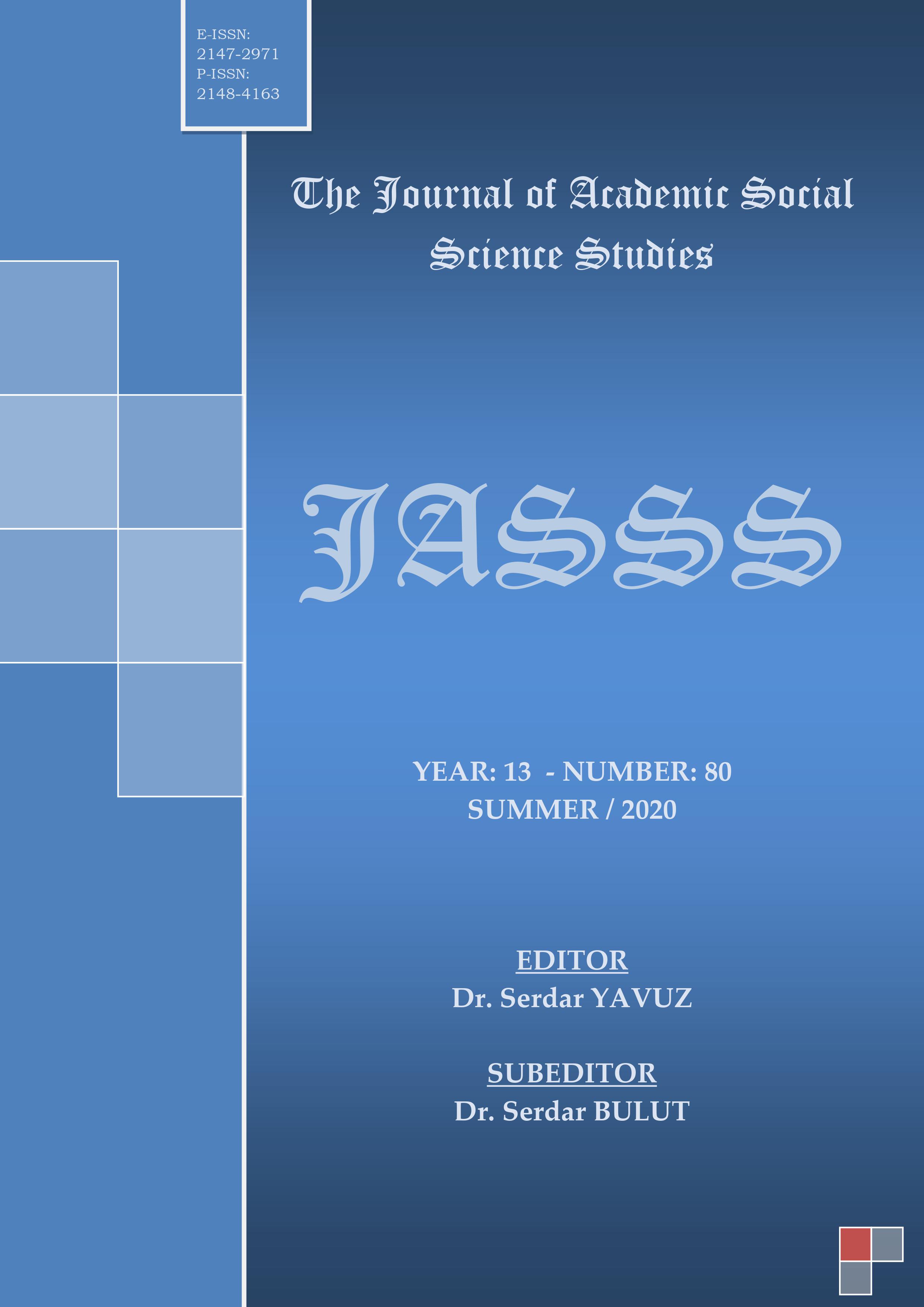Author :
Abstract
Araştırmanın amacı; Grafik tasarım eğitiminde yaratıcı tipografi uygulamalarının öğrencilerin üst düzey düşünme becerilerine etkisi var mıdır? Sorusuna yanıt aramaktır. Araştırma, G.Ü. Ankara Meslek Yüksekokulu Tasarım Bölümü Grafik Tasarımı Programında, 50 öğrenci üzerinde yürütülmüştür. Müfredat ders programı etkinliklerinin işlendiği sınıf kontrol grubu, yaratıcı tipografi uygulamalarının işlendiği sınıf deney grubu olarak adlandırılmıştır. Araştırma verileri, SPSS 20 istatistik programıyla çözümlenerek yorumlanmıştır. Eleştirel düşünce ve yaratıcı düşünce testlerinden elde edilen nicel veriler çözümlenirken, guruplar arası ön test son test değer farklılığını tespit etmek üzere F testi analizi yapılmıştır. Araştırma bulgu sonuçları özetlendiğinde: Yapılan uygulama neticesinde California Eleştirel Düşünce Eğilimi Ölçeği (CCTDI) ön test puanları değerlendirildiğinde, son test puanları açısından; iki grup arasında, deney grubu lehine anlamlı bir fark bulunmuştur. Torrance Yaratıcı Düşünce Eğilimi Ölçeği (TYDT) ön test puanları değerlendirildiğinde, son test puanları açısından; iki grup arasında, deney grubu lehine anlamlı bir fark bulunmuştur.
Keywords
Abstract
The objective of the research is to seek an answer to the question of “ Does creative typography practices have an effect on stundets’ high level cogitation skills?” The study was conducted on 50 students from Gazi University, Ankara vocational high school, Graphic Design Program. The class where activities of the already available curriculum were taught is named the “control group”, and where creative typography practices were carried out is named the “experimental group”. Data obtained during the study has been analyzed using SPSS 20 statistics software program. During the analysis of quantitative data obtained from critical thinking and creative thinking tests, F-test analysis has been used to determine whether or not there is a difference between the preliminary and final test scores of control and experiment groups. The data obtained from student products has been interpreted using ANCOVA, Single Factor Analysis of Covariance. Results obtained from study findings can be summarized as follows: When California Critical Thinking Disposition Inventory (CCTDI) preliminary test scores of the experimental and control groups were reviewed, a significant difference has been discovered in terms of final test scores between the experimental and control groups in favor of the experimental group. When Torrance Creative Thinking Disposition Inventory (TYDT) preliminary test scores of the experimental and control groups were reviewed, a significant difference has been discovered in terms of final test scores between the experimental and control groups in favor of the experiment group.
Keywords
- Aybek, B. (2006). Konu Ve Beceri Temelli Eleştirel Düşünme Öğretiminin Öğretmen Adaylarının Eleştirel Düşünme Eğilimi Ve Düzeyine Etkisi, Çukurova Üniversitesi Sosyal Bilimler Enstitüsü, Adana.
- Becer, E. (1997). İletişim ve Grafik Tasarım, Dost Kitabevi, Ankara.
- <<<<.. (2007). “Tipografide Figür ve Görsel Hiyerarşi: Öğrenci Çalışmaları” Grafik Tasarım
- Biesta, G. J.J. and Stams, G.J.J.M. (2001). Critical Thinking and the Question of Critique: Some Lessons from Deconstruction, Studies in Philosophy and Education, Volume:20, No:1, Kluwer Academic Publishers, Printed in the Netherlands.
- Cüceloğlu, D. (1995). İyi Düşün Doğru Karar Ver, Sistem Yayıncılık, İstanbul.
- <<<<<<<... (2001). İyi Düşün Doğru Karar Ver, Remzi Kitabevi, İstanbul.
- Gren, S. B. and Salkind, N. J. (2008). Using SPSS for Windows and Macintosh Analyzing and Understanding Data, Pearson Prentice Hall Upper Saddle River, New Jersey 07458.
- Güven, M. ve Kürüm, D. (2006). “Öğrenme Stilleri ve Eleştirel Düşünme Arasındaki İlişkiye Genel Bir Bakış”, Anadolu Üni. Sosyal Bilimler Dergisi Cilt:6 Sayı:1, s.75-89.
- Güvenç, B. (1991). İnsan ve Kültür, Remzi Kitabevi, İstanbul.
- Korkmaz, Ö. ve Yeşil, R. (2009). “Öğretim Kademelerine Göre Öğrencilerin Eleştirel Düşünme Düzeyleri”, Ahi Evran Üni. Eğitim Fak. Dergisi Cilt:10, Sayı:2. S.19-28.
- Sarıkavak, N. K. (2003). Çağdaş Tipografinin Temelleri, Seçkin Yayıncılık, Ankara.
- <<<<<<<<< (2009). Çağdaş Tipografinin Temelleri (2. Baskı), Seçkin Yayıncılık, Ankara.
- Sungur, N. (1997). Yaratıcı Düşünce, Evrim Yayınevi, İstanbul.
- Tarlakazan, E. (2010). İlköğretim Görsel Sanatlar Dersi 6. Sınıf Kazanımlarının İşbirlikli Öğrenme Yaklaşım Etkinlikleri İle Gerçekleştirilmesinin Öğrenci Erişisine Etkisi, Gazi Üniversitesi Eğitim Bilimleri Enstitüsü, Ankara.
- Torrance, P. E. (1962). Rewarding Creative Behaviour, Prentice-Hall Incorporation, USA. Elektronik Kaynaklar
- http://tr.wikipedia.org/wiki/Tipografi (Erişim T.: 10.09.2009).





